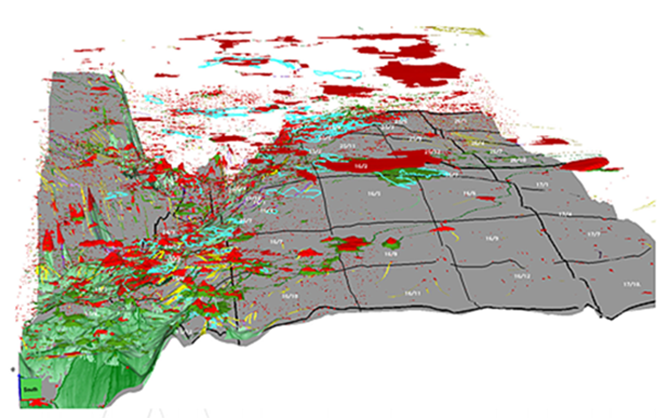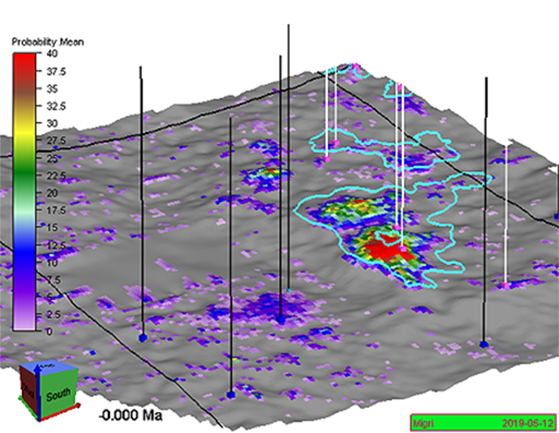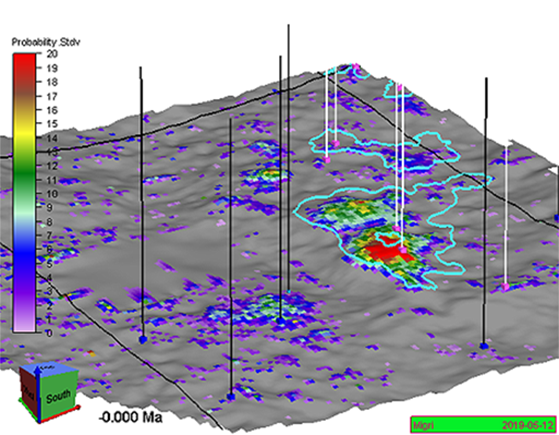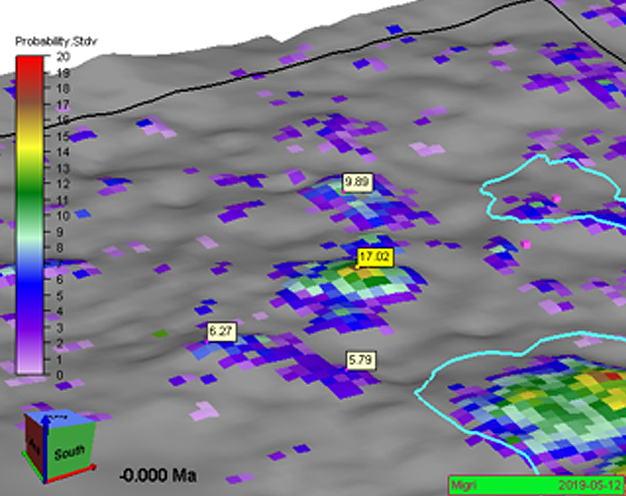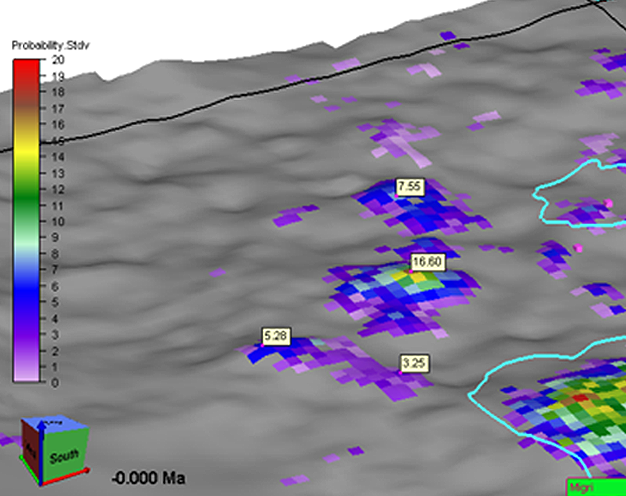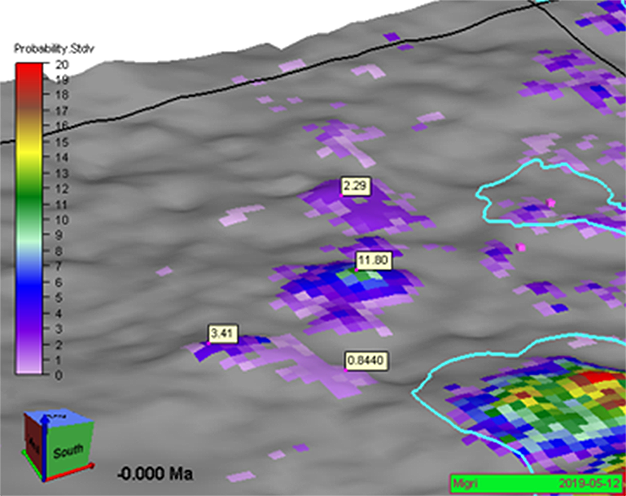New feature for understanding uncertainties in Migri

UNDERSTANDING UNCERTAINTIES IN PETROLEUM SYSTEMS
Improved understanding of uncertainties in petroleum systems can help us to improve the success rates in exploration drilling. Migris is now adding support for determining which parameters contribute more to the uncertainties in oil and gas volume and column height estimates in undrilled prospects.
THE FOLLOWING MATERIAL WAS PRESENTED AT THE AAPG ACE CONFERENCE IN MAY 2019.
The workflow that has been implemented builds upon our existing iterative Monte Carlo technique that uses the Migri hydrocarbon generation and migration software to “automatically” obtain a calibrated 3D charge model.
Here we use our calibrated Utsira model (Figure 1) to study undrilled prospects in an area south of the Sleipner Field.
We first update the calibrated regional model with (new) local data in the target area and fine-tune the calibration using the iterative Monte Carlo technique. Next, we run 1000 simulation runs to estimate the most likely oil column heights and associated standard deviations (figures 2 and 3).
We then run a ranking simulation of the 684 parameters that this model contains. This analysis requires 1369 runs. We plot the results from this ranking analysis in Figure 4 with the most important parameters at the top. In our case we immediately see that the source rock parameters of the Draupne Formation are not among the important ones.
PROSPECT WITHIN AREA

The most important parameters include entry pressure (Pe) parameters and lithology fractions (Vsh=shale fraction) and Middle Jurassic source rock parameters. These results will allow us to concentrate the model calibration efforts on the most important parameters, including the thickness of the Lower Jurassic source rock (third most important parameter in the ranking table).
The uncertainties can now be studied in detail using our new Monte Carlo parameter grouping technique. Here we only vary parameters belonging to one or a few groups while the other parameters remain unchanged at the Mean value. This allows us to compare e.g. the resulting contribution to the uncertainties (standard deviations) of the source parameters to the expulsion parameters (Figure 5).
FIGURE 5 OIL COLUMNS UNCERTAINTIES (STDV.)
We notice that the source uncertainties are much lower (max 11 m) than the expulsion parameters (16 m). The uncertainty attributed to expulsion is almost as large as the overall model uncertainty (maximum 16 versus 17 m). The important conclusion here: improving the accuracy of parameters not belonging to the expulsion group will be a waste of time, because the uncertainties will only be marginally reduced for this prospect.
This workflow can now be used in both APA and license studies. After building the geomodel, each MonteCarlo with 1000 runs took less than 3 hours on our small compute cluster. The whole analysis process can therefore be completed in a few days for normal datasets using our upcoming 1.8.2 release of Migri. For APA 2019 work, the workflow can be offered as a package with one of our North Sea Charge studies.
If you are interested in more information about our technology or running a case study,
contact Øyvind Sylta (email sylta@migris.no).

